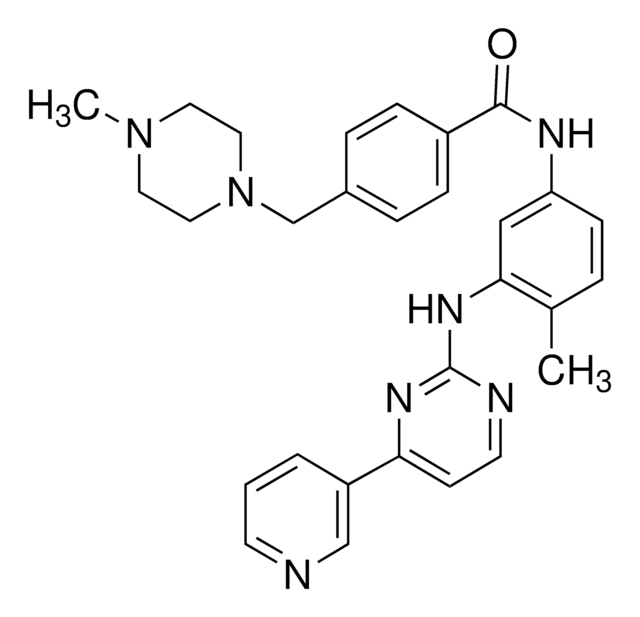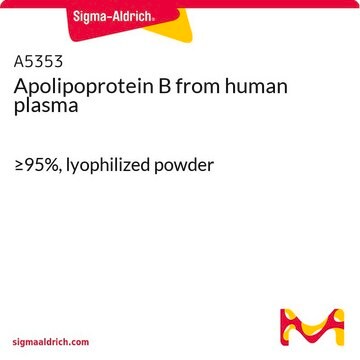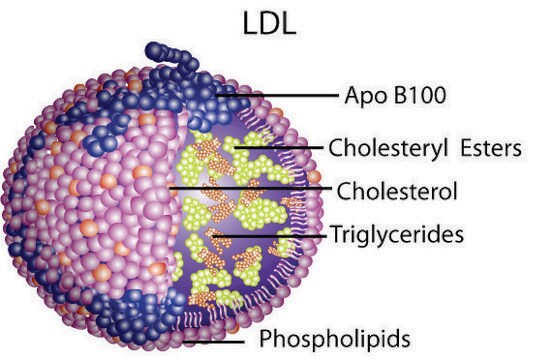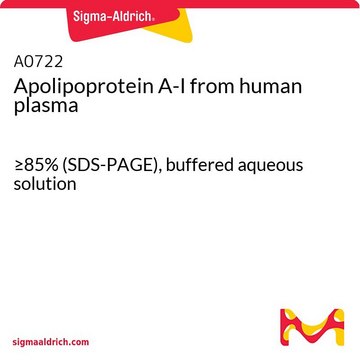추천 제품
일반 설명
Apolipoprotein E (ApoE) is an important constituent of all plasma lipoproteins. The concentration of Apo E in normal plasma is 5 mg/100mL. Significant quantities of ApoE are produced in liver and brain and to some extent in almost every organ. It exists in three major isoforms; E2, E3, and E4, which differ from one another by a single amino-acid substitution. The gene encoding this protein is localized on human chromosome 19q13.32.
생화학적/생리학적 작용
Apolipoprotein E (ApoE) serves as a ligand for low density receptors and participates in the transport and redistribution of cholesterol and other lipids. Other functions include immunoregulation, cell growth modulation and differentiation. Apo E is thought to be involved in tissue repair as increased amounts of the protein are found at sites of peripheral nerve injury and regeneration. A mutant form is associated with familial type III hyperlipoproteinemia. In addition to facilitating solubilization of lipids, these proteins help to maintain the structural integrity of lipoproteins, serve as ligands for lipoprotein receptors, and regulate the activity of enzymes involved in lipid metabolism. ApoE′s interaction with specific ApoE receptor enables uptake of chylomicron remnants by liver cells, which is an essential step during normal lipid metabolism. It also binds with the low-density lipoprotein (LDL) receptor (apo B/E).
물리적 형태
Frozen in 50 mM NH4HCO3, pH 8.0.
Storage Class Code
11 - Combustible Solids
WGK
WGK 3
Flash Point (°F)
Not applicable
Flash Point (°C)
Not applicable
시험 성적서(COA)
제품의 로트/배치 번호를 입력하여 시험 성적서(COA)을 검색하십시오. 로트 및 배치 번호는 제품 라벨에 있는 ‘로트’ 또는 ‘배치’라는 용어 뒤에서 찾을 수 있습니다.
이미 열람한 고객
Genome-wide association study identifies a single major locus contributing to survival into old age; the APOE locus revisited.
Deelen J
Aging Cell, 10(4), 686-698 (2011)
Apolipoprotein E isoforms and lipoprotein metabolism.
Phillips MC
IUBMB Life, 66(9), 616-623 (2014)
Apolipoprotein E-low density lipoprotein receptor binding: study of protein-protein interaction in rationally selected docked complexes.
Prevost M and Raussens V
Proteins: Structure, Function, and Genetics, 55(4), 874-884 (2004)
Karol Kaiser et al.
Nature communications, 10(1), 1498-1498 (2019-04-04)
WNTs are lipid-modified proteins that control multiple functions in development and disease via short- and long-range signaling. However, it is unclear how these hydrophobic molecules spread over long distances in the mammalian brain. Here we show that WNT5A is produced
Molecular mechanism of apolipoprotein E binding to lipoprotein particles.
Nguyen D
Biochemistry, 48(13), 3025-3032 (2009)
자사의 과학자팀은 생명 과학, 재료 과학, 화학 합성, 크로마토그래피, 분석 및 기타 많은 영역을 포함한 모든 과학 분야에 경험이 있습니다..
고객지원팀으로 연락바랍니다.








